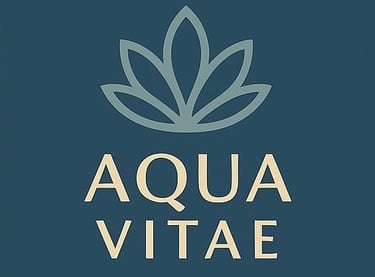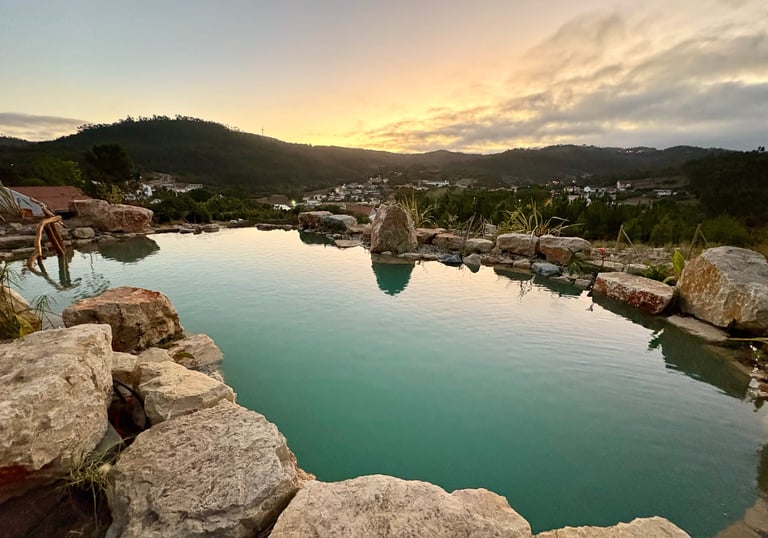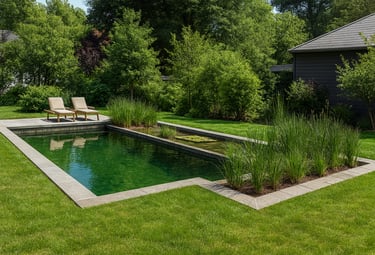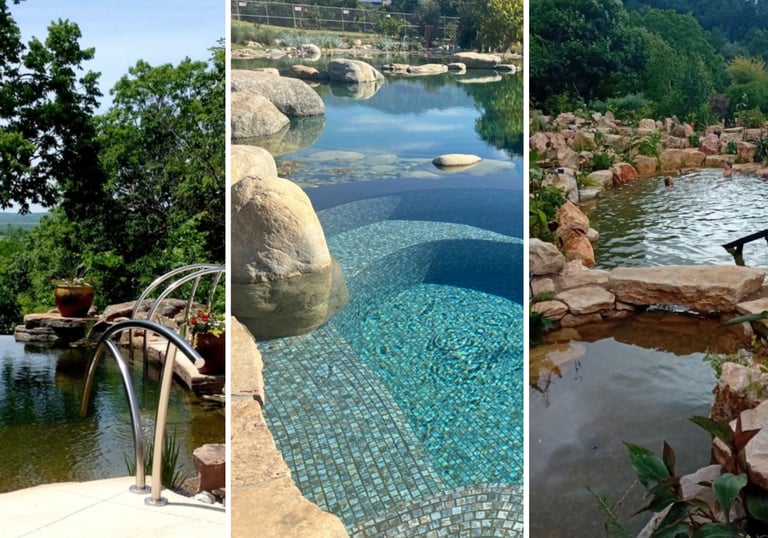How to Build a Natural Lake | Filtration, Liners & Design | Aqua Vitae Guide
Build a swimmable natural lake with bentonite clay liners, eco-filtration, and plant zones. A complete guide to cost-effective, chemical-free lake design.
8/18/20258 min read
How to Build a Natural Lake: Methods, Materials & Filtration Options
A practical guide to building large, chemical-free lakes for swimming, wildlife, and landscape integration — without the need for concrete walls or chlorine systems.
As more landowners seek eco-friendly water features beyond swimming pools, natural lakes have become a powerful alternative — whether for swimming, wildlife, irrigation, or aesthetic impact. Unlike natural pool and biopools, which often require vertical walls and precision infrastructure, lakes rely on large volumes, gentle slopes, and balanced ecosystems.
But how are these lakes actually built? How do they stay waterproof? And how do you keep the water clean without chemicals?
This guide walks you through every step — from choosing a lining method to understanding filtration zones — and shows how Aqua Vitae approaches natural lake design with efficiency and elegance.
What’s the Difference Between Natural, Saltwater & Chlorine Pools
The key technical distinction between natural pools and natural lakes is the edge geometry:
Pools require vertical walls for compact swimming zones. This usually means concrete, steel reinforcement or other engineering.
Lakes have sloped banks — often no steeper than 1:3 — allowing natural containment of water through landscape design, not hard structure.
Lakes are more forgiving, but also require much more space, and must be planned with erosion, groundwater, and long-term hydrology in mind.


The Big Difference — Pools vs Lakes
Lining a Natural Lake Waterproofing
In a traditional swimming pool, waterproofing is achieved with reinforced concrete or a membrane liner. For a natural lake, those methods become cost-prohibitive due to scale.
Here are the 3 most common, effective lining systems for large lakes:
Clay Lining + Geotextile —Natural + Synthetic
A hybrid sealing method that combines natural sodium bentonite clay with a layer of geotextile fabric, often used in larger lake construction or restoration projects. The geotextile acts as a stabilizing and protective barrier, improving the performance and durability of the clay liner.
How It Works:
Sodium bentonite clay (in powdered or granulated form) is spread and compacted over the excavation base.
A geotextile membrane (woven or non-woven fabric) is laid over or under the clay layer — sometimes sandwiched between two fabric layers in a product known as GCL (Geosynthetic Clay Liner).
The entire system is compacted or anchored with additional soil, depending on site conditions.
Once hydrated, the clay expands and self-seals, while the fabric helps prevent displacement, erosion, or puncture over time.
✅ Pros:
Natural & Eco-Friendly: Uses clay, a naturally occurring material, avoiding synthetic rubber or plastic liners.
Self-Healing: Bentonite expands upon hydration and can seal small cracks or root intrusions automatically.
Erosion Protection: The geotextile layer prevents movement or washout of the clay liner in sloped areas or during heavy rainfall.
Durable: More resistant to root intrusion, animal burrowing, and mechanical damage than clay alone.
Cost-Effective: Less expensive than synthetic liners for large-scale installations, especially if clay is sourced locally.
⚠️ Cons:
Requires Skilled Installation: Improper compaction or layering can lead to leakage or failure.
Moisture Management is Critical: Clay must stay hydrated to remain effective — extended drought or drainage can cause cracking.
Less Suitable for Steep Walls: Not ideal for vertical or sharply sloped profiles (which is why lakes typically have natural beach-like edges).
Heavier Earthwork: Requires excavation, compaction equipment, and sometimes multi-layer staging, depending on design.
Best Use Cases:
Large natural lakes, wetlands, and constructed ponds where a low-impact, chemical-free liner is desired.
Projects where budget and environmental sustainability are top priorities, and naturalistic aesthetics are important.
Remote or rural areas where synthetic liner transport would be cost-prohibitive.
EPDM/HDPE/LLDPE Liners —Fully Synthetic
Flexible rubber or polyethylene liners are among the most impermeable and reliable methods for sealing natural swimming lakes and large ponds. These liners come in sheets (typically EPDM, HDPE, or LLDPE) and are laid across the excavation surface, often with a protective geotextile underlay and overlay to prevent punctures or UV degradation.
How It Works:
The ground is leveled and smoothed with care to remove sharp rocks or root debris.
A geotextile underlay is often placed to cushion the liner and prevent punctures.
Large EPDM or HDPE/LLDPE liner sheets are unrolled across the basin, overlapping if needed, and sealed using tape, welding, or adhesives.
In some systems, a top geotextile layer or sand cover may be added for UV protection or to hold soil and plants.
The liner is anchored around the perimeter with trenching, stones, or structural edging.
✅ Pros:
Extremely Waterproof: Near-total impermeability, making them ideal for tight sealing of pools and lakes.
Durable & Long-Lasting: EPDM and HDPE liners can last 30–50 years or more if installed properly and protected from UV and punctures.
Low Maintenance: Once installed, requires very little upkeep aside from occasional inspection.
Steep Slope Friendly: Allows for more defined edges or terraces than clay systems, within engineering limits.
Flexible Design Shapes: Can accommodate custom basins, stairs, or planted shelves with precision.
⚠️ Cons:
Expensive: High material cost and transportation — especially for large surface areas.
Less Eco-Natural: Synthetic materials are not biodegradable and can look out of place if not carefully integrated.
Puncture Risk: Vulnerable to sharp rocks, roots, or animal activity if not protected by geotextile layers.
Labor Intensive: Requires precision, especially in seaming or welding multiple panels.
Aesthetic Challenges: Needs careful edge treatment (e.g. stone coping, plant cover) to avoid the visible black plastic/rubber look.
Best Use Cases:
Natural swimming pools or high-clarity lakes with defined edges or higher water pressure.
Small to medium-sized lakes where design precision or guaranteed waterproofing is critical.
Urban or semi-formal environments where longevity and clean construction are prioritized.
Natural Lake Lining Methods Using Bentonite Clay
—Natural
Sodium bentonite is a naturally occurring clay known for its incredible swelling and sealing properties. When mixed with native soil or applied in a concentrated layer, it forms an effective barrier to water seepage. Unlike synthetic liners, it is entirely natural and self-healing — making it one of the most eco-integrated sealing methods for lakes and ponds.
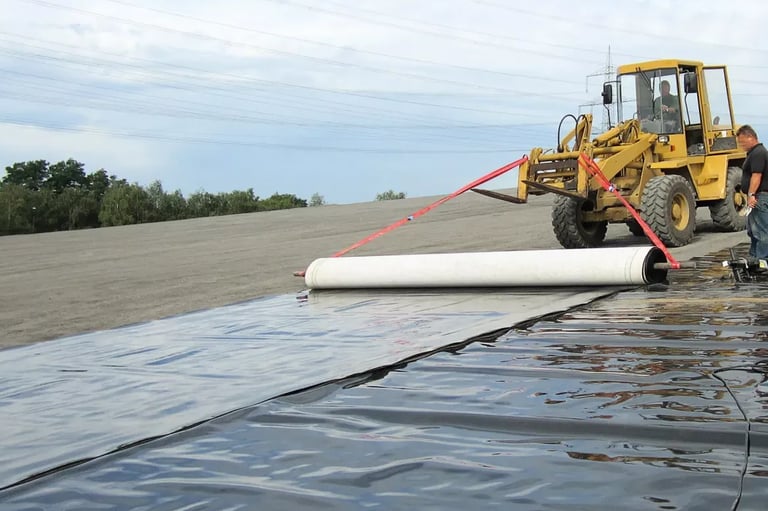

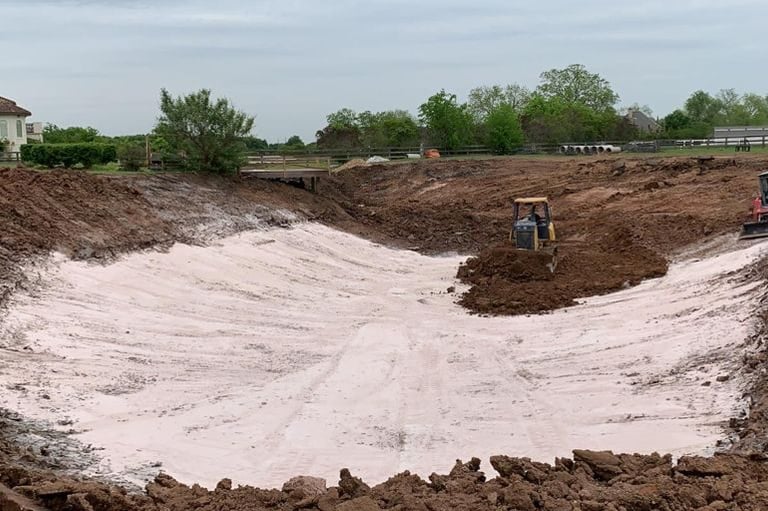

Powder/Granular Bentonite How It Works:
The lake basin is excavated and cleared of debris, with grading for proper water flow.
Bentonite clay (powder or granules) is spread in a uniform layer, typically 4–10 cm thick, or mixed directly with native soil.
The clay is compacted using rollers or earthmovers to remove air pockets and bind it with the subsoil.
Once filled with water, the clay hydrates and expands, forming a dense, low-permeability barrier.
If properly hydrated and protected, the clay can last decades with little to no maintenance.
Pros:
100% Natural: No synthetic materials — ideal for wildlife, aquatic plants, and natural aesthetics.
Self-Healing: Clay expands to fill small holes and cracks caused by movement or root intrusion.
Affordable for Large Areas: Far less expensive than synthetic liners for large lakes or irregular shapes.
Good Thermal Mass: The natural clay body retains temperature more evenly, supporting aquatic life.
Minimal Visual Impact: No visible material once covered — the lake appears completely natural.
⚠️Cons:
Moisture-Dependent: Requires consistent moisture to stay sealed — drought conditions can cause cracking or leaks.
Not for Steep Edges: Works best with sloped or terraced banks; vertical edges will crumble or erode over time.
Labor Intensive: Requires proper soil testing, application thickness, and heavy machinery for compaction.
Longer Setup Time: Takes longer to install and test for proper sealing.
Performance Varies by Soil Type: Sandy or porous soils may require higher bentonite quantities or additives.
Best Use Cases:
Large lakes, wetlands, or ecological restoration projects where natural integration is a priority.
Budget-conscious projects that need to seal a lot of surface area.
Projects in clay-rich regions, where native soil can be blended to reduce material cost.
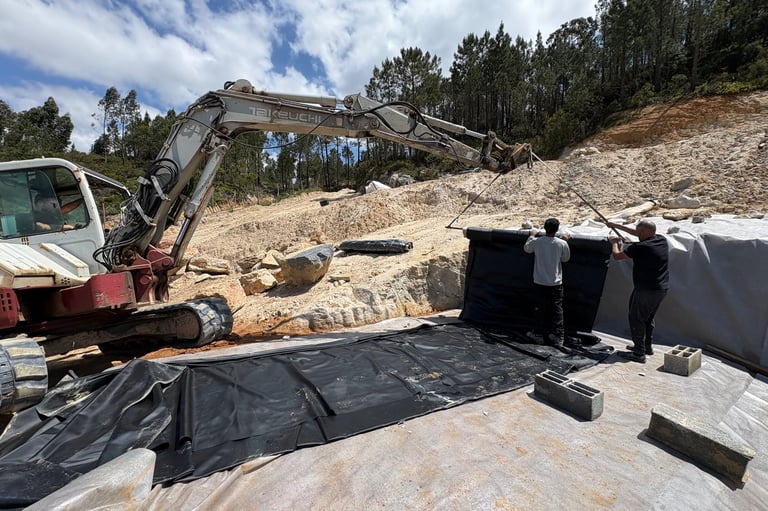

Filtration in Large Natural Lakes
Lakes rely more on volume and ecosystem balance than intensive mechanical filtration. That said, clean, swimmable lakes still need active design — especially for clarity and circulation.
✅ Biological Zones
Shallow shelves with gravel and aquatic plants (e.g. iris, scirpus, pickerel, water lilies)
These areas filter nutrients and stabilize sediments
May double as wildlife habitat
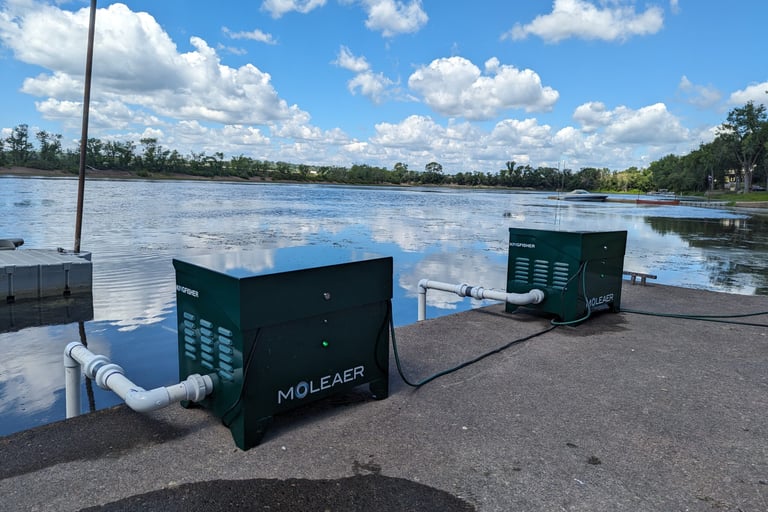

✅ Aeration Systems
Bottom diffused air stones or nanobubble generators
Prevent stagnation, oxygenate sediment layers, suppress anaerobic bacteria
Particularly effective in summer heat
✅ Optional Mechanical Filtration
For lakes that will be heavily used for swimming and/or have large fish load:
Surface skimmers
Drum filters
Biobead filters
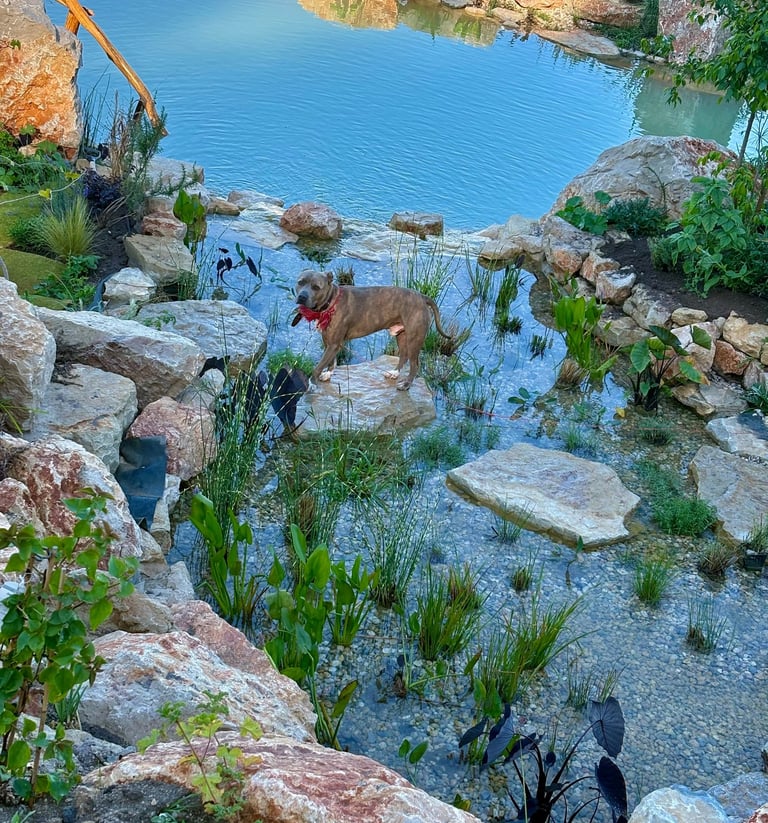

Core Filtration Components:
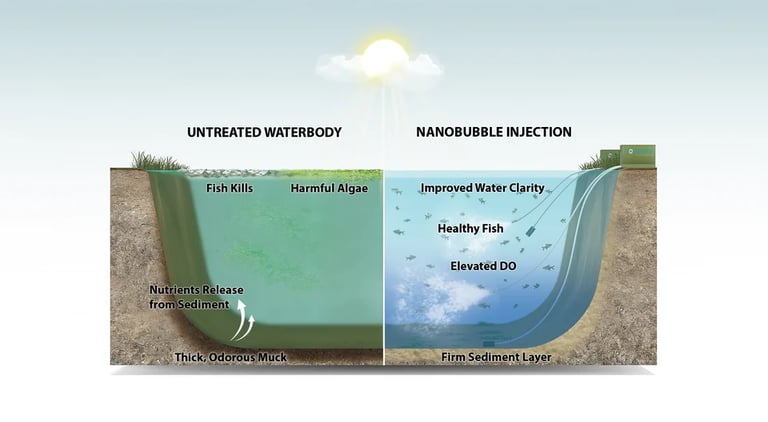

✅ Technological Sterilization
UV-C clarifiers
These are typically placed at water inflow points or used in a loop recirculation system
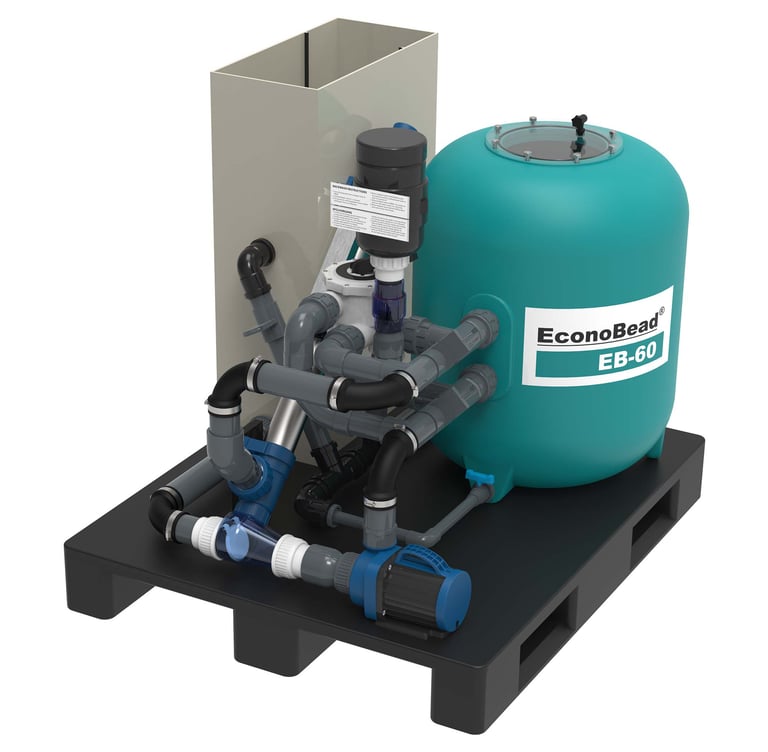

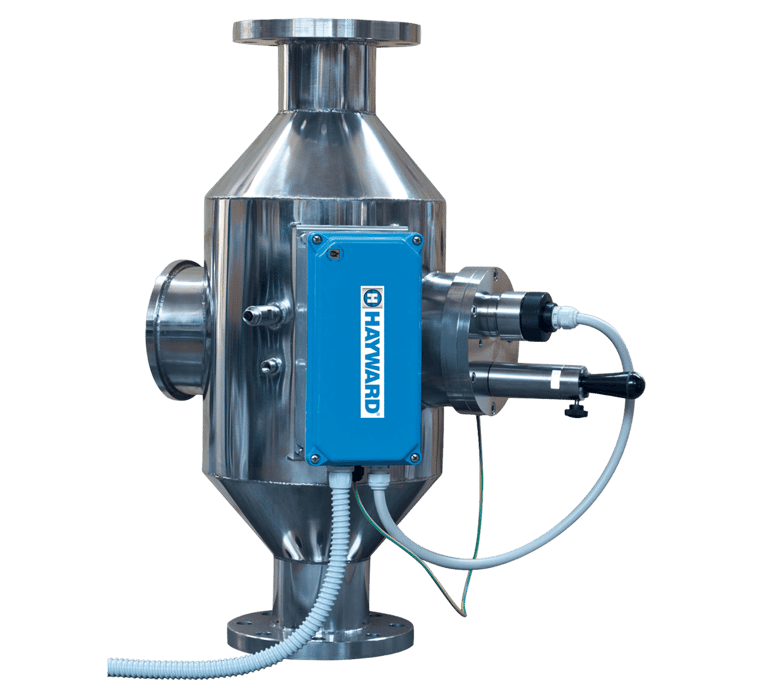

How Clean Can It Stay
Without Chemicals?
Thanks to the high water volume and surface area, lakes resist rapid shifts in pH, algae blooms, and temperature swings.
If designed well, a lake can remain:
Clear and swimmable
Free of string algae and surface scum
Low-maintenance
Key design elements include:
Proper depth zoning (ideally ≥2.5m in center)
Adequate plant coverage
Passive water circulation or airlift return
Avoiding runoff contamination (fertilizers, livestock, etc.)
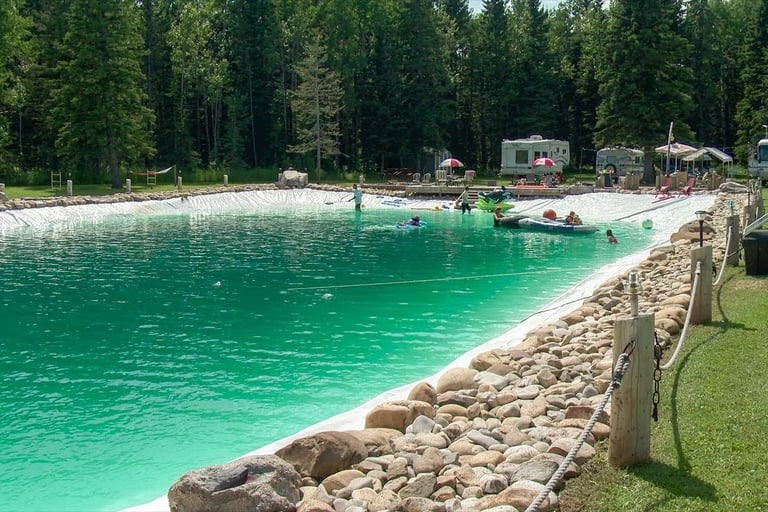

Design Features – Beaches, Docks & Natural Aesthetics
Natural lakes offer flexibility in their layout and aesthetic features:
Beaches: Gently sloped gravel entries, planted edges, or soft-sand transitions
Floating Docks: Anchored systems for swimming, lounging, or diving
Diving Areas: If depth allows (≥2.8m), you can include specific plunge zones
Planted Margins: Use reeds, sedges, and lilies to blur the line between water and land
Terracing & Paths: Create access while preventing erosion
Unlike pools, lakes emphasize blending into the land, and they invite interaction with nature, not just swimming.
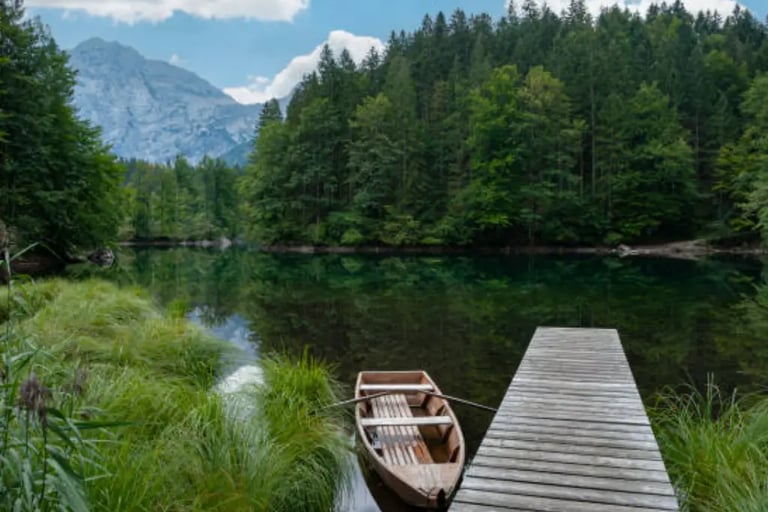

Summary – Which build method works for your project?

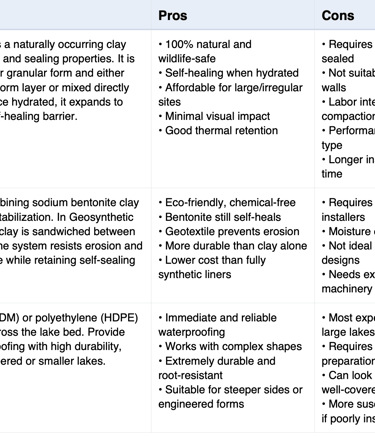
The above is an adapted excerpt from our forthcoming book, Living Water: The Art & Science of Natural Pools — to be released in March 2026.
This comprehensive guide explores the philosophy, technology, and design principles behind natural pools, ponds, and lakes — blending ecological wisdom with hands-on expertise. From regenerative filtration systems to large-scale builds, it’s a resource for anyone looking to create water features that are alive, enduring and artfully integrated into the landscape.
Stay tuned for pre-order details and early access materials.
How Aqua Vitae Approaches Natural Lake Design
While most builders specialize in small-scale pools, Aqua Vitae brings decades of natural system expertise to larger projects. Our process includes:
Site-specific design and hydrology
Integration of natural stone paths, terracing, and plant zones
Filtration strategy tailored to lake size and use
Consultation for DIY or full-service builds
Whether you want a swimmable private lake, an ecological feature for your property, or a centerpiece for an estate — we offer the technical and artistic skill to bring it to life.
Start Planning Your Lake
Interested in building a natural lake? We offer consultations, custom plans, and project management for lake installations throughout Portugal and beyond.
Find out more about our Consultation Services →
or
To see more guides, check out our Guide Library! →
or
Download the Natural Pool Revolution PDF →
You may also like...
Top Natural Pool Builders in Portugal: How to Choose the Right Expert | Aqua Vitae Guide
Looking to build a natural swimming pool in Portugal? Discover the leading companies, their specialties, and how to choose the right builder for your vision. Learn what sets Aqua Vitae apart.
Why Most Natural Pools Don’t Look Natural | Aqua Vitae Guide
Many natural pools miss the mark. Discover why — and how Aqua Vitae designs truly naturalistic pools using a method refined over 25 years.
Explore styles and various features for creating your dream natural pool, pond or water‑feature. From design inspiration to filtration, plants and aesthetic detail.
Design Your Dream Natural Pool – Styles & Features | Aqua Vitae Guide
Experience the future of swimming with natural pools.
© 2025 Aqua Vitae. All rights reserved.
